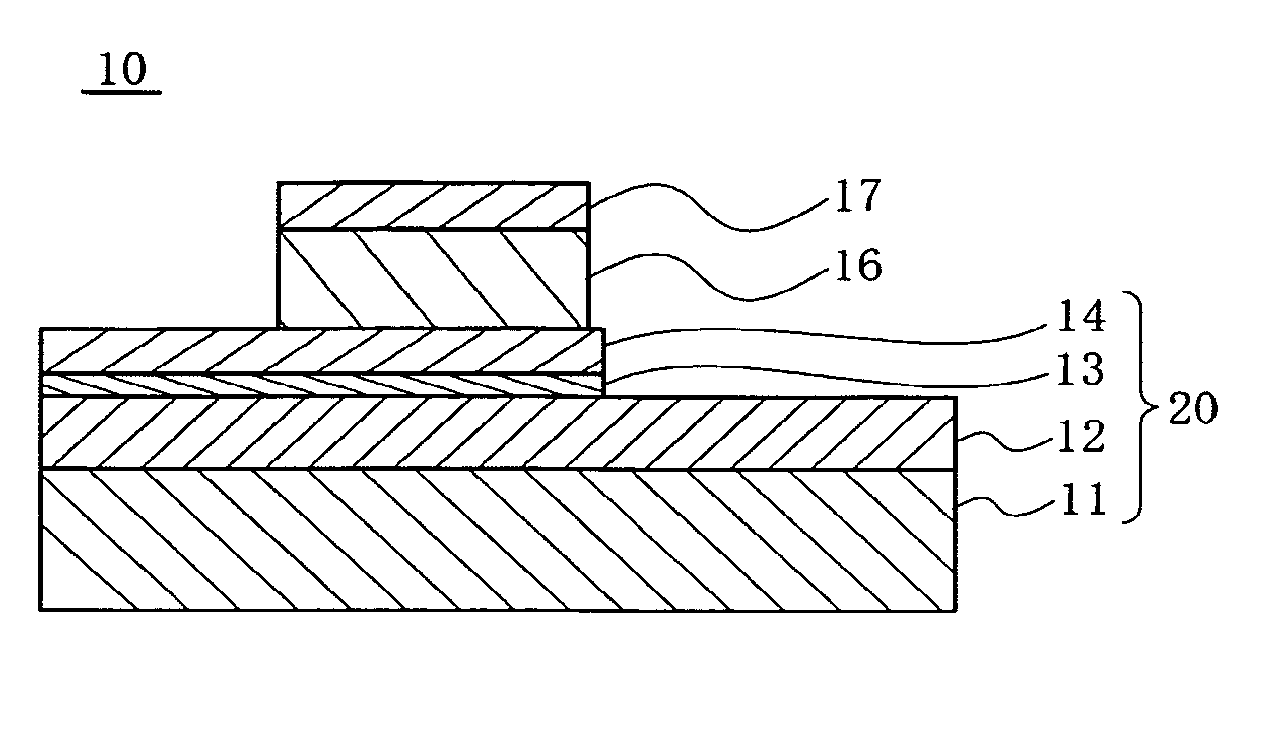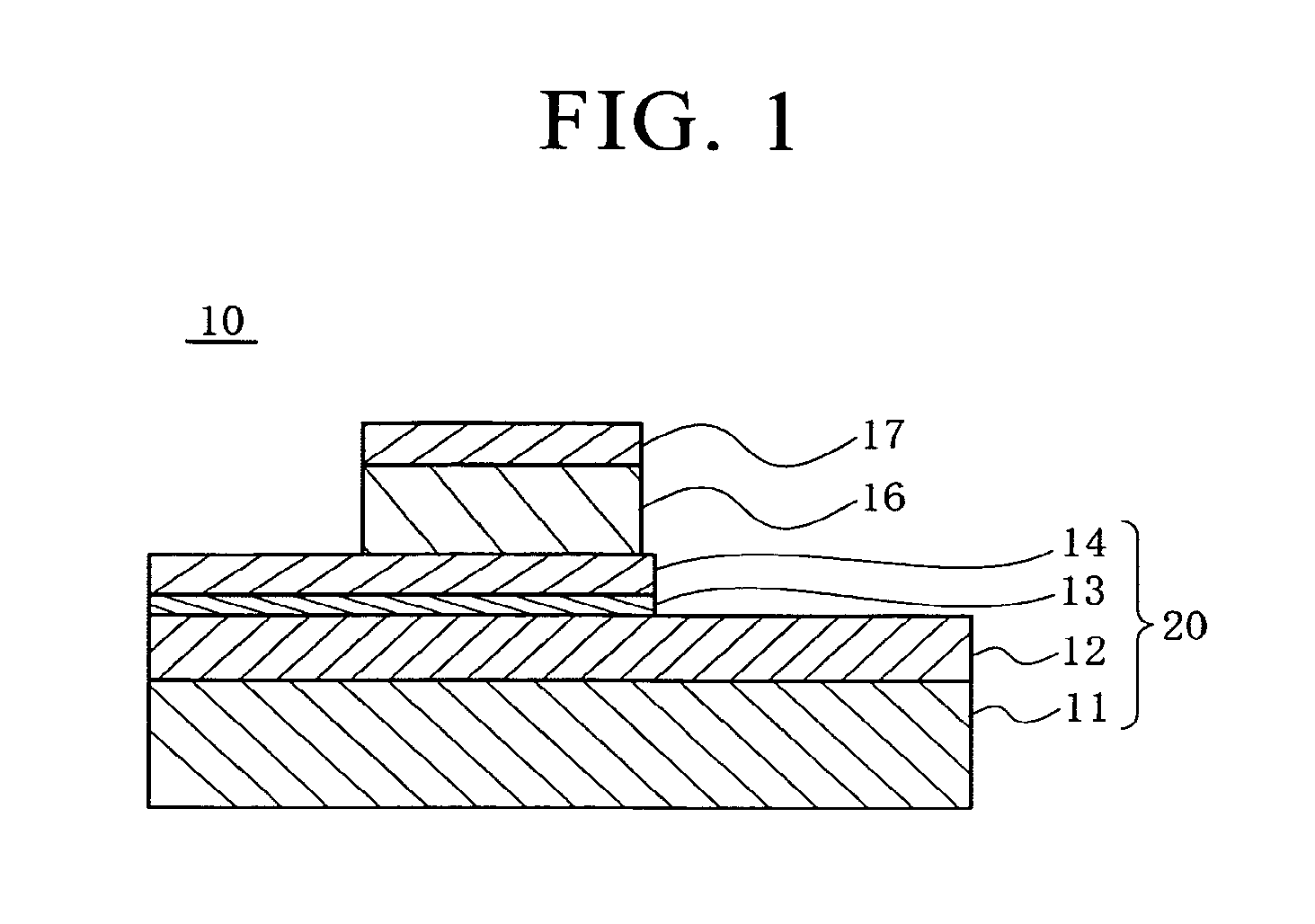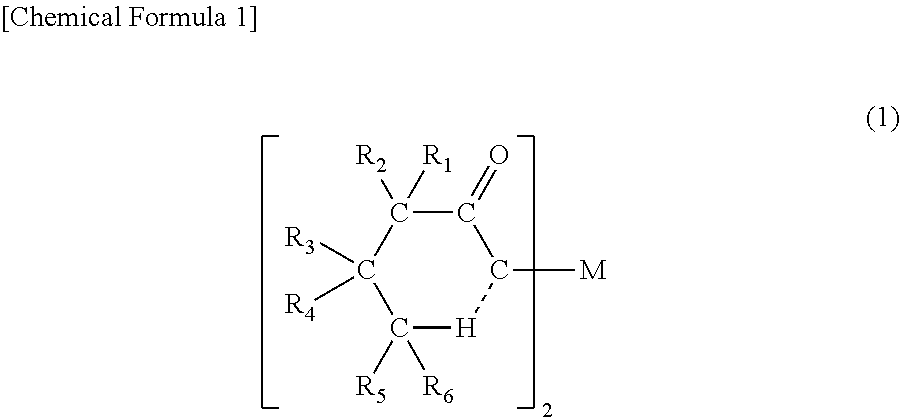Method for manufacturing thin film capacitor and thin film capacitor obtained by the same
a technology of thin film capacitor and manufacturing method, which is applied in the direction of thin/thick film capacitor, fixed capacitor, solid-state device, etc., can solve the problems of deterioration of minute cracking or bubbling of dielectric thin film, and leakage current characteristics, so as to suppress hillocks, superior leakage current characteristics and dielectric breakdown voltage characteristics, the effect of superior leakage current characteristics
- Summary
- Abstract
- Description
- Claims
- Application Information
AI Technical Summary
Benefits of technology
Problems solved by technology
Method used
Image
Examples
example 1
[0050]Firstly as shown in FIG. 1, an insulation film 12 is formed on a substrate 11. More specifically, a SiO2 film having a thickness of 500 nm is formed by thermal processing of a Si substrate having a thickness of 500 μm in an atmosphere of a dried oxidizing gas. Then a metallic Ti film is deposited using a sputtering method on the SiO2 film and subjected to thermal processing for one hour at a temperature of 700° C. to thereby form an adhesion layer 13 having a thickness of 30 nm.
[0051]Then Pt is used as a noble metal in a sputtering method to form a lower electrode 14 having a thickness of 100 nm on the adhesion layer 13. The crystal orientation of the lower electrode 14 displays a preferred orientation with respect to the (111) face. Furthermore the average crystal grain size of the lower electrode 14 is adjusted to be 40 nm. In this manner, the supporting body 20 is formed which includes a substrate 11, an insulation film 12 formed on the substrate 11, and a lower electrode 1...
example 2
[0054]A thin film capacitor was obtained which is the same as the Example 1 except that the dielectric thin film is formed on a lower electrode which has a residual stress value as expressed in Table 1 hereafter and has a thickness of 200 nm. This thin film capacitor will be called Example 2.
example 3
[0055]A thin film capacitor was obtained which is the same as the Example 1 except that the dielectric thin film is formed on the lower electrode which has an average crystal grain size and residual stress as expressed in Table 1 hereafter and has a thickness of 300 nm. This thin film capacitor will be called Example 3.
PUM
| Property | Measurement | Unit |
|---|---|---|
| temperature | aaaaa | aaaaa |
| crystal grain size | aaaaa | aaaaa |
| temperature | aaaaa | aaaaa |
Abstract
Description
Claims
Application Information
 Login to View More
Login to View More - R&D
- Intellectual Property
- Life Sciences
- Materials
- Tech Scout
- Unparalleled Data Quality
- Higher Quality Content
- 60% Fewer Hallucinations
Browse by: Latest US Patents, China's latest patents, Technical Efficacy Thesaurus, Application Domain, Technology Topic, Popular Technical Reports.
© 2025 PatSnap. All rights reserved.Legal|Privacy policy|Modern Slavery Act Transparency Statement|Sitemap|About US| Contact US: help@patsnap.com



